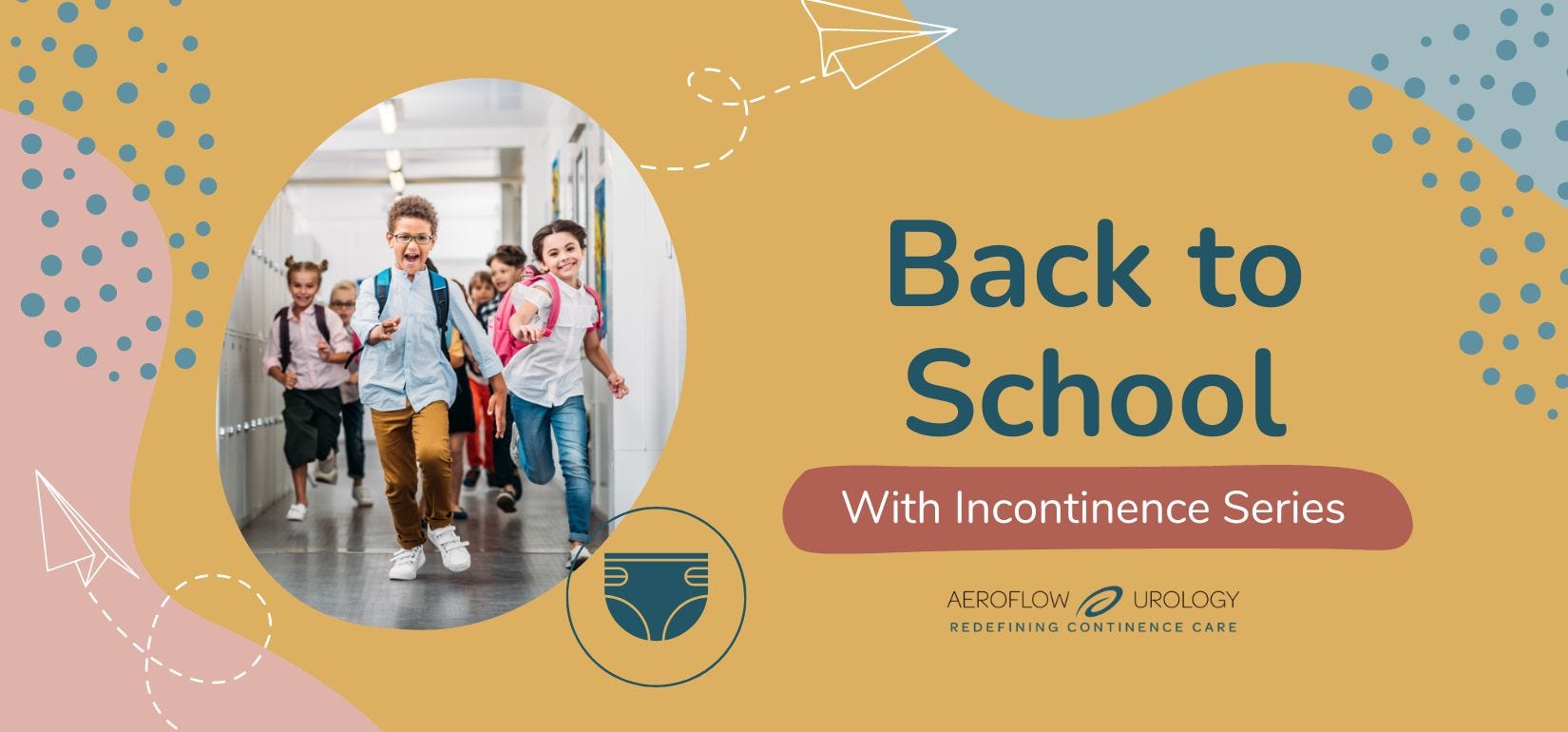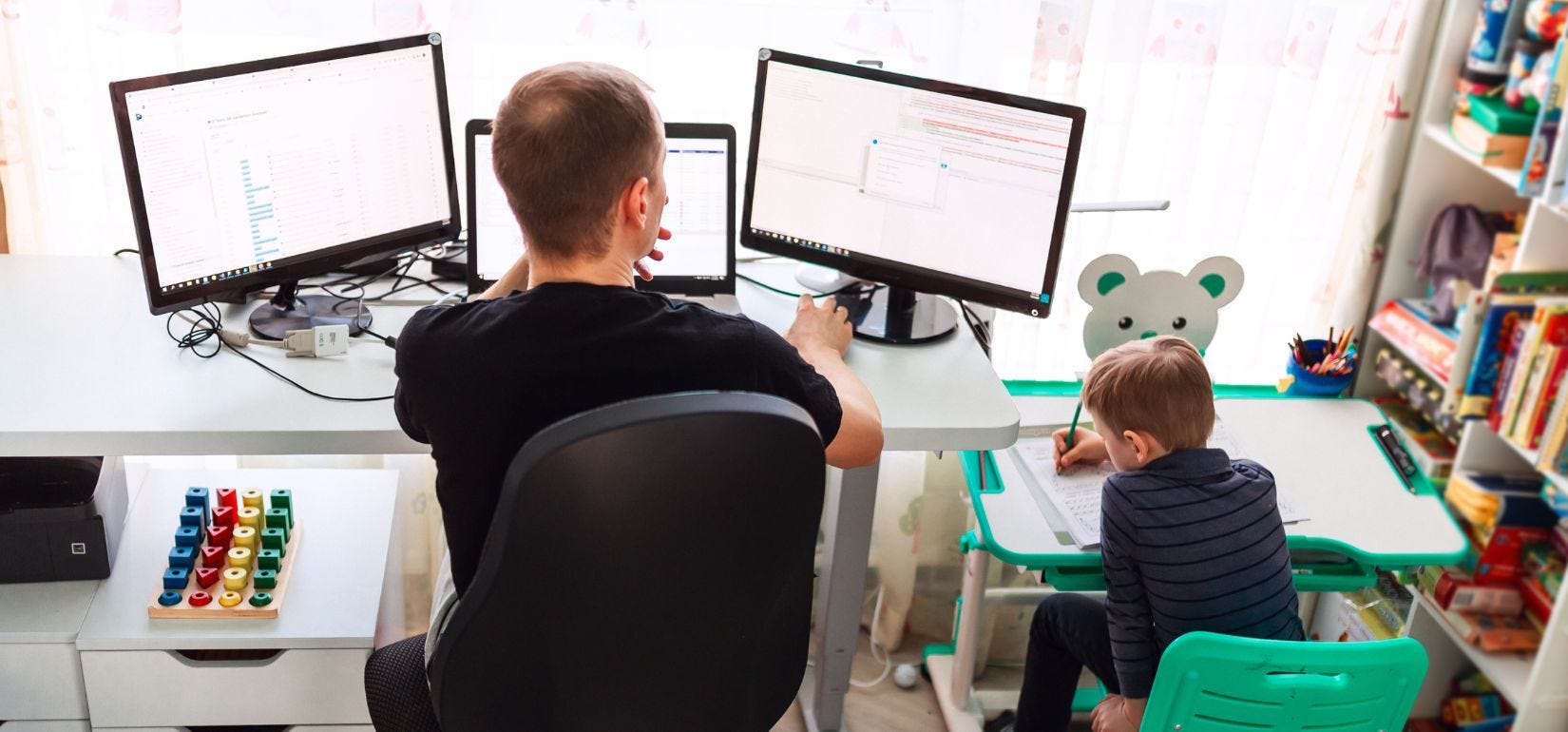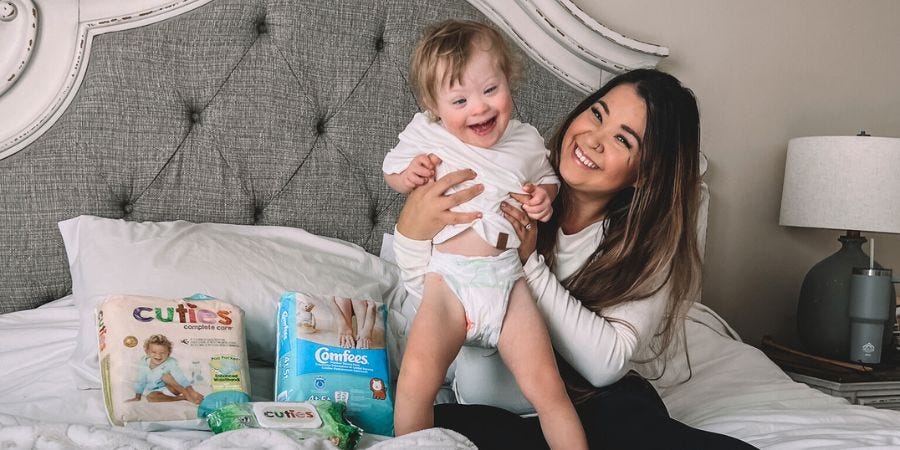This piece has been medically reviewed by Samantha Eaker DNP, CPNP-PC, Medical Advisor to Aeroflow Urology.
Incontinence can be embarrassing and confusing for children, adolescents, and adults alike and become a source of anxiety. This is especially true when it’s time to return to school, as new classrooms, teachers, schedules, and peers can spike stress and cause more accidents.
It’s not just parents and caregivers who can help students lessen incontinence-related stress, though! Teachers play a prominent role in assisting students with their incontinence in the classroom.
In this post, we’ll tell you how to help your students with incontinence.
What Is Urinary Incontinence?
Urinary incontinence is the loss of bladder control which leads to involuntary urine leakage. It’s common among adults and children in the US. There are a few different types of urinary incontinence.
Check Your Eligibility
2 Easy Steps
Diapers and pull-ons for children ages 3+ with special needs, available through Medicaid.
- Stress incontinence occurs when you leak urine when sneezing, laughing, coughing, lifting heavy objects, or exercising.
- Overactive bladder (OAB) or urge incontinence occurs when you feel the sudden and intense urge to pee and void your bladder more than 8 times a day.
- Functional incontinence, also known as disability urinary incontinence, is when your bladder is working correctly but you’re unable to make it to the restroom due to a physical or mental condition.
- Mixed incontinence is when you experience one or more types of incontinence at once.
Many students with special needs experience one of these types of urinary incontinence at school, and it can be difficult to manage without the support of parents, so it’s important that teachers do what they can to help students.
10 Ways Teachers Can Help Students With Incontinence
There are lots of things teachers can do to support their students with urinary incontinence inside the classroom. Use these tips if you’re a teacher yourself or let your child’s teachers know about these tricks.
1. Make Time to Speak With Parents
As we recommend in our blog about how parents can talk to teachers about their child’s incontinence, you should plan a time– preferably before the school year begins– to meet with your student’s parents to discuss the plan for accommodations.
2. Help With Timed Voiding
Children with incontinence will often be recommended to practice timed voiding (e.g. peeing every 1 to 2 hours). Some students will need reminders of when to use the bathroom at these times if they don’t have another way to remember.
If your student does have a way to be reminded, such as a potty watch that vibrates when it’s time to void, be sure to approve it before it’s used in the classroom so it doesn’t disturb the other students.


3. Encourage Water Intake
It’s critical that people with incontinence hydrate correctly. This is because water keeps the bladder functioning properly and flushes bacteria that may cause urinary tract infections (UTIs) that build up in the urinary system.
Remind your students with incontinence to drink water if you see them avoiding it, or remind them to get their water bottle from their backpack if it's not out.
4. Develop Code Signals
It may be embarrassing for students to yell across the classroom or even say out loud when they’re having a bathroom emergency. Rather than making your students communicate verbally, you can come up with hand signals or code words for emergencies. Let your student know they can use these signals from anywhere in the room– just make sure you’re watching for them!
5. Be Supportive, Accommodative, & Communicative
Remember to be supportive, accommodative, and communicative.
You may need to adjust your schedule when your student needs help if an accident occurs or if they need to use the bathroom more times than other students, which they most likely will. Be upfront with your student and let them know they can use the bathroom whenever they need to. And remember not to shame your students for needing help!


6. Seat the Student Next to the Door
The closer your student with incontinence is to the bathroom, the easier it will be for them to avoid accidents. Make the accommodation of allowing your student to sit at the desk that’s closest to the door to make their bathroom use easier. You could also give them their own hallway pass to use when needed.
7. Monitor the Snacks You Give Out
If you bring snacks for your students, be aware of what types of foods and drinks you hand out if you have a student with incontinence in your classroom. Certain foods, such as caffeine, soda, carbonated drinks, spices, and citrus fruits can irritate children’s bladders. Instead, aim for snacks with high amounts of fiber and drinks that are good for the bladder.
8. Notice & Discourage Bullying
Incontinence can be embarrassing for children of all ages, particularly for older children for whom bladder control is the expected societal norm at school. In some cases, this can create a culture of bullying which should be noticed and stopped completely in your classroom to support inclusive education. One way to address inclusion is to communicate openly about incontinence and how many people experience it.
9. Keep Documentation In the Classroom
It may be helpful to keep documentation from your student’s healthcare provider on hand in the classroom so substitutes or other aides are aware of the details of your student’s incontinence condition and needs.
10. Keep Extra Incontinence Supplies In the Classroom
Accidents do happen and parents or caregivers can forget to pack extra incontinence supplies for their children. When this occurs, it’s good to have extra supplies, such as diapers, pull-ups, gloves, or wipes somewhere nearby to give to your student. You can also let your student’s family know that they can get free incontinence supplies through Aeroflow Urology if they qualify. We accept most Medicaid plans and some private insurance plans, depending on people’s medical conditions and the states they reside in.
To see if you qualify, use our Eligibility Form! It takes under 5 minutes and consists of only 2 steps!
If your student does qualify, we’ll send them high-quality incontinence supplies covered by insurance every single month and deliver them straight to their doorstep so they never come to school without incontinence supplies!
Information provided on the Aeroflow Urology blog is not intended as a substitute for medical advice or care from a healthcare professional. Aeroflow recommends consulting your healthcare provider if you are experiencing medical issues relating to incontinence.








